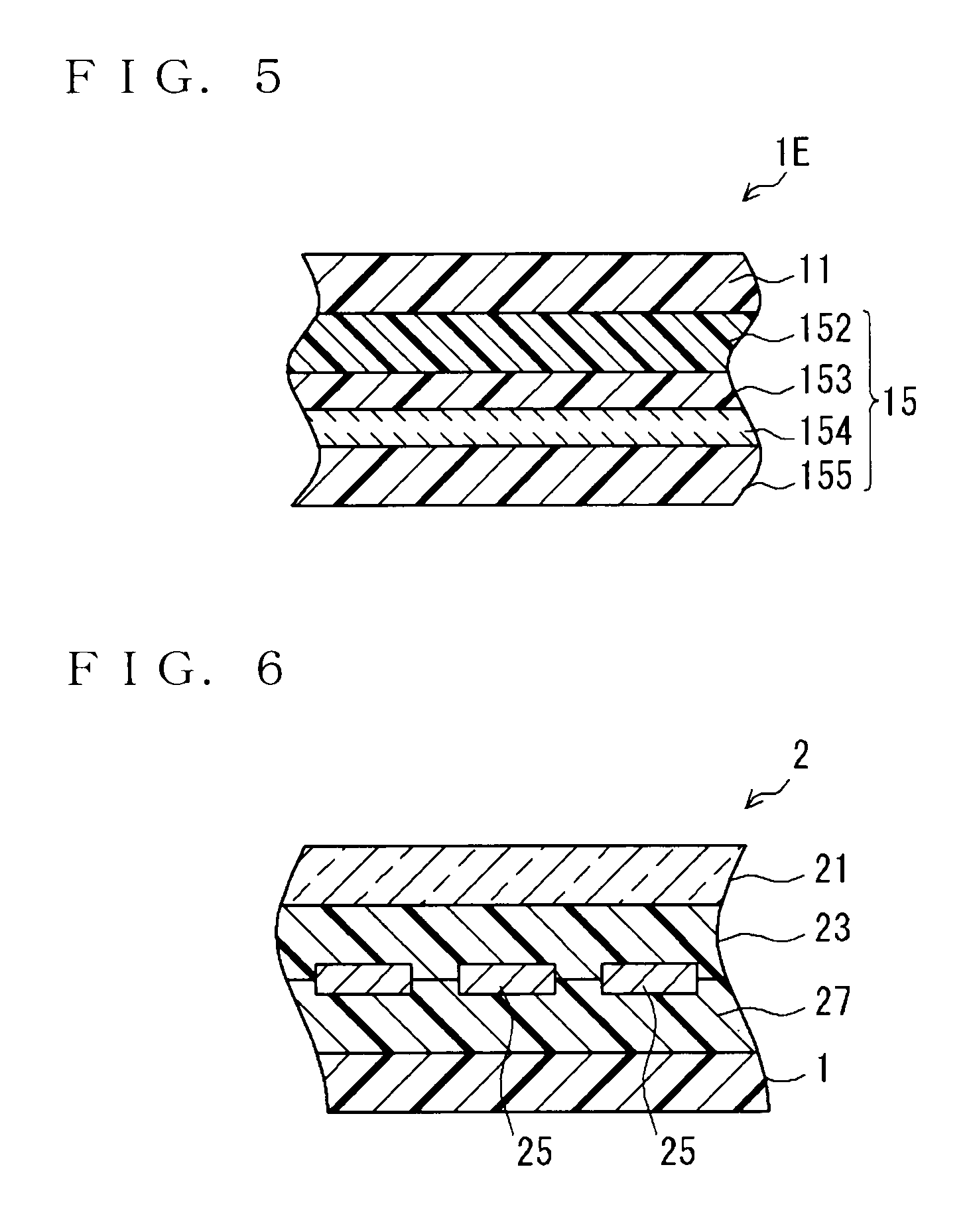Solar cell back surface protective film, and solar cell module provided with same
a solar cell and back surface technology, applied in spectacles/goggles, spectral modifiers, tyre parts, etc., can solve the problems of insufficient film adhesiveness to a filling unit, insufficient long-term durability, etc., to achieve excellent heat resistance and weathering resistance, excellent impact resistance, excellent adhesiveness
- Summary
- Abstract
- Description
- Claims
- Application Information
AI Technical Summary
Benefits of technology
Problems solved by technology
Method used
Image
Examples
example 1-1
[0331]A first starting material composition containing 30 parts of an acrylic rubber reinforced aromatic vinyl-based resin, 30 parts of an acrylonitrile styrene copolymer, 40 parts of an acrylonitrile styrene N-phenyl maleimide copolymer, 0.3 part of the silane coupling agent (x), and 20 parts of a white-based coloring agent were kneaded at a temperature of 250° C. with Brabender kneader to obtain a first thermoplastic resin composition. After that, a T-die was used to form a single-layer type back surface protective film for solar cell (having a thickness of 400 μm) consisting of the first thermoplastic resin composition. Various evaluations were conducted for this back surface protective film for solar cell. The results are shown Table 1.
examples 1-2 to 1-9
and Comparative Examples 1-1 to 1-5
[0332]Single-layer type back surface protective films for solar cell were obtained in the same procedure as Example 1-1, except that the applicable components listed in Table 1 were adopted at predetermined ratios. Kneading temperatures and film thicknesses were shown in Table 1. Moreover, various evaluations were conducted for these back surface protective films for solar cell. The results are shown in Table 1.
TABLE 1Example1-11-21-31-41-51-61-71-81-9FirstFirstAcrylic rubber reinforced aromatic303030303030thermo-startingvinyl-based resinplasticmaterialButadiene rubber reinforced aromatic40resincompositionvinyl-based resincomposition(part)Acrylonitrile styrene copolymer30303020303030Acrylonitrile styrene N-phenyl maleimide40404040404040copolymerPolythylene terephthalate100Polypropylene100Silane coupling agent (x)830.33030.3Silane coupling agent (y)30.3Silane coupling agent (z)0.3Titanium oxide20201520201515Perylene-based black pigment21Quinophthalo...
example 2-1
[0335]Henschel Mixer was used to prepare a first starting material composition and a second starting material composition for forming a first resin layer and a second resin layer, respectively, as shown in Table 2. Thereafter, the compositions were each melted and kneaded with a twin-screw extruder (type name “TEX44” manufactured by The Japan Steel Works, LTD.) at a barrel temperature of 270° C., thereby obtaining two kinds of pellets constituting a first thermoplastic resin composition and a second thermoplastic resin composition, respectively.
[0336]Subsequently, a multi-layer type film forming machine provided with two extruders each comprising a T-die having a die width of 1,400 mm and a lip distance of 1.5 mm, and a screw of 65 mm diameter was used, and the first thermoplastic resin composition and the second thermoplastic resin composition were supplied to the extruders. Then, the molten resins were discharged from the T-dies at a temperature of 270° C., respectively, to form a...
PUM
| Property | Measurement | Unit |
|---|---|---|
| reflectance | aaaaa | aaaaa |
| wavelength | aaaaa | aaaaa |
| thickness | aaaaa | aaaaa |
Abstract
Description
Claims
Application Information
 Login to View More
Login to View More - R&D
- Intellectual Property
- Life Sciences
- Materials
- Tech Scout
- Unparalleled Data Quality
- Higher Quality Content
- 60% Fewer Hallucinations
Browse by: Latest US Patents, China's latest patents, Technical Efficacy Thesaurus, Application Domain, Technology Topic, Popular Technical Reports.
© 2025 PatSnap. All rights reserved.Legal|Privacy policy|Modern Slavery Act Transparency Statement|Sitemap|About US| Contact US: help@patsnap.com



